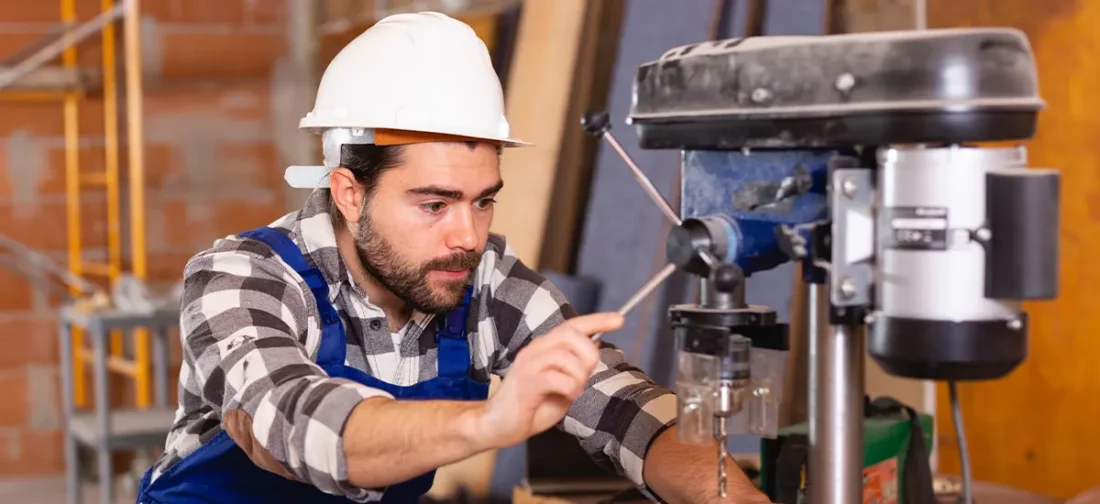
About a year ago, the switch broke on my desk lamp. I’m not entirely sure how it happened, but the top half of the casing cracked off, exposing all the components inside. I discovered that I could still make the lamp work by turning the dial, and using a hair clip to manually connect the two metal parts to complete the electrical circuit – voilà! Let there be light! Not only was this inconvenient, awkward, and time-consuming, but it was REMARKABLY STUPID. (*Disclaimer: do NOT under ANY CIRCUMSTANCES do this.) (EVER.) First of all, much to my shock, the hair clip itself was also metal, and as I was later scolded, it turns out that when using that to connect a 15-amp circuit (120 volts), there was a very real possibility I could have royally messed up and accidentally stopped my heart.
I swear I am an educated woman. But it took someone far more educated than I am in other milieus to put a very abrupt end to my foray into Poor Man’s MacGyver-ing. Lesson learned: when dealing with all things electrical, call a professional. (Follow-up: the switch has since been properly repaired, the lamp works perfectly, the risk of electrocution has been reduced to nil, and the hair clip has been reassigned to holding back my hair while I live to write another day.)
Why am I relaying what is arguably one of the top ten dumbest things I have ever done? To highlight how desperately we need skilled trade workers.
Who are these workers?
Skilled trade workers, sometimes referred to as “blue-collar workers”, are those who work in precision craft and repair occupations (like carpenters, plumbers, and – mercifully – electricians), as well as service professions like inspectors, machine operators, and laborers. Something that most people don’t realize is that many occupations within the medical field also fall under the category of the Skilled Trade Worker: dental hygienists, MRI, lab, & pharmacy technicians, and medical sonographers, to name just a few.
Each of these occupations carries a significant value in keeping the nation’s infrastructure running. To paraphrase Joel McHale’s character, Jeff Winger, in the TV show Community, without these workers, “the lights go out and the ice cream melts.” This is why it’s pretty scary that the U.S. is currently facing a shortage of skilled trade laborers.
How did this happen?
There are several factors contributing to this shortage of skilled trade workers. According to Irwin Tools:
- The median age of a skilled trades worker in the U.S. is 55, meaning that many are looking at retirement within the next few years.
- For every three skilled trade workers who retire, there is currently only one who is trained/skilled enough to replace them.
- Automation, advancements in the digital world, and offshoring are all also massive contributors to the decline.
- The Great Recession of 2008 – only close to half of the construction workers that left the industry during the Recession returned (2.3 million jobs were terminated; 1.2 million jobs were added back).
- These days there is less emphasis on training – most high schools have eliminated shop class, instead prioritizing economics and business classes, thus leading to a slim 6% of high school students considering a career in the trades.
There are also some unfortunate stigmas regarding a career in the trades that contribute to a lower interest in pursuing these jobs. Many still believe that the trades are fallback careers for those who did not do well in school. This could not be further from the truth, as most trades require the successful completion of an average of a 2-year education, plus apprenticeships that can last anywhere from 12 months up to 6 years – face it: there’s a reason they’re called “skilled” trade workers.
There is also the belief that the trades are strictly a boys’ club: not so! There are multiple opportunities for women within the skilled trade sector (please see the next section). And finally, is the misjudgment that the trades neither pay well nor offer job security. Bunk. Read on for some eye-opening facts.

Building opportunities
A number of companies, schools, and organizations have recognized the demand for skilled trade workers, and are offering programs and incentives to encourage the recruiting and training of future skilled laborers.
The Home Depot has initiated its Path To Pro program, introducing participants to valuable hands-on, industry-recognized training in the trades. In 2019, they expanded the program into high schools across the U.S., with the goal of generating interest from younger generations.
President Biden has committed to supporting the trades by developing and expanding registered apprenticeships, reinstating the National Advisory Committee on Apprenticeships, and overturning industry-recognized apprenticeship programs (which are not necessarily held to the highest standards) in favor of registered apprenticeship programs.
So far as drawing women to careers in the trades, opportunities absolutely abound: coming out of West Berkeley California is Girls Garage, a nonprofit organization that offers classes for girls aged 9-18 in everything from woodworking, welding, and carpentry to architecture and design.
Last year, Career School Now released an inspiring article about women in skilled trades highlighting how in-demand women are to the trades, as well as providing handy links to courses offered in a variety of areas, and requiring no more than a high school diploma/GED.
Show me the money
So far as salary goes, according to talent.com the average earnings for a skilled trade worker in the U.S. in 2021 is $47,500. Naturally more experienced workers can earn up to $69,160 (and more, frankly), while entry-level positions can expect to draw around $35,720 – which is not too bad for a starting salary. Factor in the time and cost of education for learning a trade, and you could be earning that much before the white-collar crowd even makes their first payment towards their student loans. Additionally, you could be earning that much working a necessary, challenging, and rewarding job.
There will always be a need for skilled trade workers, and now more than ever is the perfect time to consider the benefits and security that come with learning a valuable trade. Yes, we live in a digital age, but we still need those who know how to keep the nation’s framework running. Because believe me: you do not want me showing up to fix your electrical problem with beauty products.













